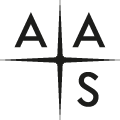Abstract
We have obtained EUV spectra between 90 and 255 Å of the comets C/2002 T7 (LINEAR), C/2001 Q4 (NEAT), and C/2004 Q2 (Machholz) near their perihelion passages in 2004 with the Cosmic Hot Interstellar Plasma Spectrometer (CHIPS). We obtained contemporaneous data on NEAT with the Chandra ACIS instrument, marking the first simultaneous EUV and X-ray spectral observations of a comet. The total CHIPS/EUV observing times were 337 ks for NEAT, 234 ks for LINEAR, and 483 ks for Machholz, and for both CHIPS and Chandra we calculate we have captured all the comet flux in the instrument field of view. We set upper limits on solar wind charge-exchange emission lines of O, C, N, Ne, and Fe occurring in the spectral bandpass of CHIPS. The spectrum of NEAT obtained with Chandra can be reproduced by modeling emission lines of C, N, O, Mg, Fe, Si, S, and Ne solar wind ions. The measured X-ray emission-line intensities are consistent with our predictions from a solar wind charge-exchange model. The model predictions for the EUV emission-line intensities are determined from the intensity ratios of the cascading X-ray and EUV photons arising in the charge-exchange processes. They are compatible with the measured limits on the intensities of the EUV lines. For NEAT, we measured a total X-ray flux of 3.7 × 10-12 ergs cm-2 s-1 and derive from model predictions a total EUV flux of 1.5 × 10-12 ergs cm-2 s-1. The CHIPS observations occurred predominantly while the satellite was on the dayside of Earth. For much of the observing time, CHIPS performed observations at smaller solar angles than it was designed for, and EUV emission from the Sun scattered into the instrument limited the sensitivity of the EUV measurements.


